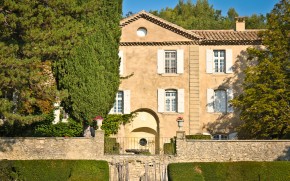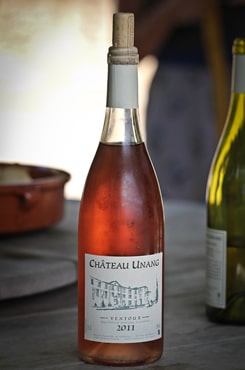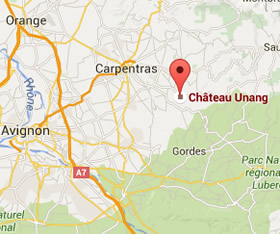
In the late 18th century, an Italian aristocrat married into the family that owned Unang. Subsequently, the château was spruced up with a facelift, and a formal garden was designed to step down the hillside, following the path of a natural spring. Three terraced gardens were planted, each anchored by a fountain fed from the spring. In 1882 a six-meter wooden cross was mounted on a stone plinth on the hilltop, a restoration of the earlier cross. Frustratingly, the original date of the cross and other inscriptions in the stone have weathered away; much of that history, along with the origins of the name Unang, has been lost.
The property sits deep in the tail end of the Nesque Valley, named after the Nesque River that flows out of the high Vaucluse Plateau to the east and runs through a rugged limestone gorge. Unang is an isolated, self-contained domaine with, interestingly enough, its own geological category: les sables d’Unang. This refers to a particular type of sandy soil that lies overtop limestone. Apart from Unang’s hillside, pockets of the sands of Unang are also found in the Gigondas AOC.

